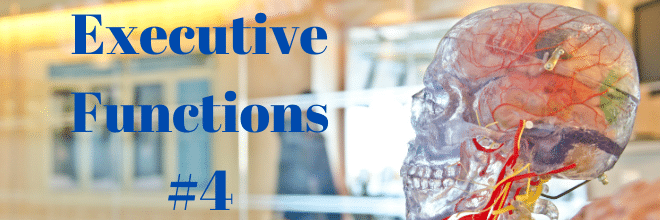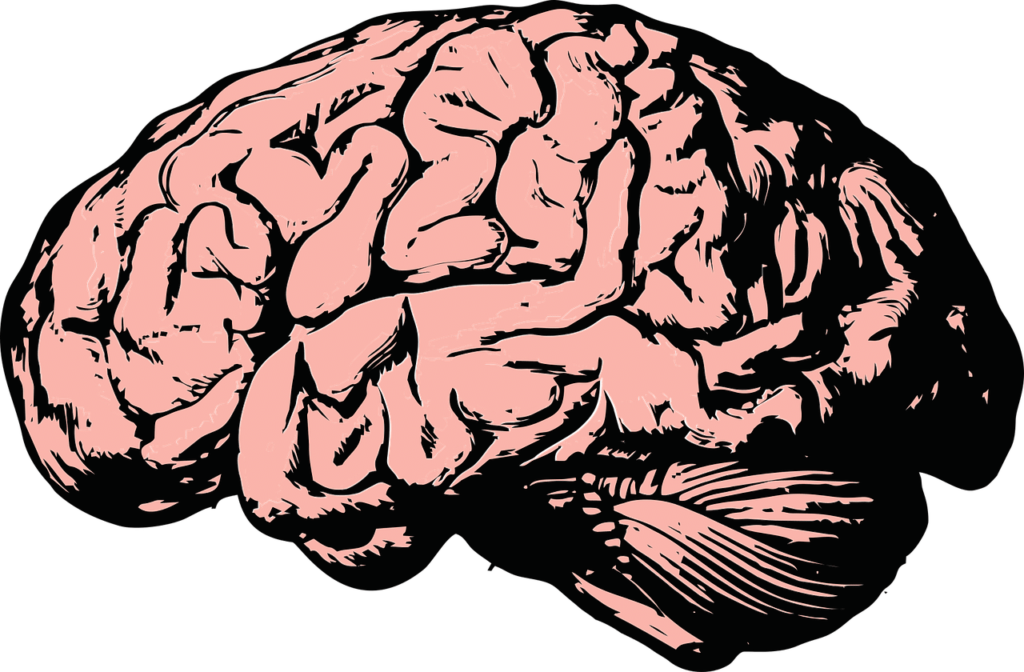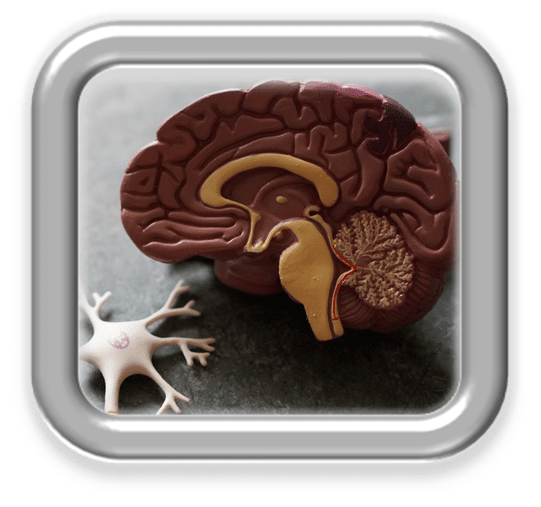
This is Part 1 of a 5-Part Series on Executive Function. Links at the bottom.
We have all had this thought:
“What were you thinking!!!”
Maybe it was when your own child caused some disaster in your kitchen. Maybe it was when your student did something so unique and disastrous like supergluing his pencils to the desk because the teacher said: “I don’t want to see your pencils move.”
What were they thinking?
Maybe, they weren’t.
I find it so much easier to understand the behavior of children with autism or impulsivity challenges when I see executive functions of the brain in a new light. One where it is a subconscious activity of chemicals intended to reach a goal.
Intending to look just like their peers.
Intending to make us adults happy.
When I look at executive functions of the brain from a scientific perspective, I get less frustrated and can find my way to teaching strategies to eliminate these behaviors. So, in this essay, I want to provide that same relief for you. Let’s take a quick journey through what is going on in the brain to enable executive function activities.
I know you didn’t come here to get bored to tears so I am going to keep it as interesting as possible by quickly highlighting three brain areas that have a huge effect on executive function and then provide you with an example of executive function development.
Executive Functions of The Brain
The executive system in the brain handles new and unfamiliar tasks. It continues to be used in these tasks until they are automatic. These tasks can include:
- Planning or decision making
- Error correction or troubleshooting
- Situations where responses are not well-rehearsed
- Unfamiliar sequences of actions
- Dangerous situations
- Difficult situations
Brain development that produces executive function skills.
Our genetic code provides the body with instructions on how to develop the brain and which connections to create.
It is dependent on positive experiences such as:
- Good nutrition
- Social interactions
- How we are cared for
- Attentiveness of our caregivers
Why don’t executive functions of the brain develop?
The most common factors associated with atypical executive skill development include:
- Early environments with high stress
- Poverty
- Inadequate nutrients
- Toxins
- Deprived sensory, social, and emotional stimulation
- Abuse
- Substance abuse
Executive function difficulties are also commonly associated with many disorders. The difficulties are usually described as “secondary to” or “related to” for two very important reasons:
- Learning disabilities, Autism, etc are official diagnoses. Executive function is not. It refers to weaknesses in the brain’s self-management system (Brown, 2020).
- Executive function difficulties do not exactly overlap with disorders. For instance, children with learning disabilities and ADHD often have executive function difficulties. But not all children with ADHD do. If children with ADHD do have executive function difficulties, they may not be the same. So one child might struggle with planning and decision making while another has difficulty with memory. Both have ADHD. Both have executive function difficulties. But the outcomes are very different.
The most common disorders that can lead to or have secondary characteristics of executive function difficulties include:
- Autism (and related pragmatic disorders)
- ADHD
- Learning Disabilities
- Intellectual Disabilities
What Areas of the Brain are involved in Executive Function?
It is generally believed that the frontal lobes of the brain regulate the processes of executive function.
Executive functions “coordinate” the processes of many different parts of the brain.
Three main areas of the brain’s prefrontal cortex are involved in executive function:
The Dorsolateral Prefrontal Cortex (DLPFC)

- Decision making
- Working memory
- Planning
- Working recall
- Organization skills
- Abstract thinking
The Anterior Cingulate Cortex (ACC)
- Decision-making
- Socially-driven interactions
- Empathy-related responses
The Orbitofrontal Cortex (OFC)
- Controlled impulsivity
- Controlled compulsivity
- Habit formation
- Monitoring ongoing behavior
- Socially appropriate behaviors
Alvarez, (2006); Lezak, (2004).
Summary: What’s important?
Anytime you make a decision, the brain sends coordinating messages between different areas of the brain. Executive function is the brain’s ability to 1) know to send these messages and 2) coordinate the actions.
Executive functions “coordinate” the processes of all of the different parts of the brain so it is hard to say that the ability resides in any exact place.
- Growth of executive function skills across youth and adolescence
- Executive skills develop shortly after birth.
- A window of dramatic growth occurs between 3-5 years.
- Improvement continues on through adulthood
- A decline occurs later in life.
As an example, let’s take a look at Inhibition. Remember from our article: Building Student Executive Functioning Skills
Inhibition is the ability to stop one’s own behavior at the appropriate time, including stopping actions and thoughts.
This is what the development of inhibition looks like across time:
Executive Function Development Example: Inhibition
3 years old
- Initial development of executive function skills
- Understand they have to wait and will remain patient with continued parent guidance.
5 years old
- Able to inhibit themselves
- Follow safety rules
- Raise their hand to speak
- Example: Development of inhibition
7 years old
- Goal formation can begin to develop
- Middle school
- Inhibit undesired behavior even when they are not being watched
High school
- Make good use of their time
- Sacrifice participation in immediate event to partake in a better, future event

Join us this month in SLP Impact for two live CEU events focused on upping our game with Executive Functions and helping our students in new and profound ways. We start with a live masterclass on November 4th:
Cognitive Processes and Changes Across Adolescence: Executive Function 301
Then on November 18th we are hosting a live QandA Session:
The Untold Story About Executive Function Difficulties: Injury, Stress, Ethnicity, and Poverty
Find out more here: SLP Impact
Reference:
Brown, Thomas E. “The Difference Between ADHD and Executive Functioning Issues.” Difference Between ADHD and Executive Function Disorder, Understood, 17 Apr. 2020, www.understood.org/en/learning-thinking-differences/child-learning-disabilities/executive-functioning-issues/difference-between-executive-functioning-issues-and-adhd.
5 Part Executive Function Series
Part 1: Executive Function in Speech Therapy – What is Our Role as SLPs?
Part 2: Building Student Executive Functioning Skills
Part 3: 9 Ways Executive Function Affects Learning
Part 4: Executive Functions of the Brain – Understand This and Understand Your Students
And a Bonus!: Helping When Children with Executive Function Difficulties Have Additional Diagnoses




You have given a list of The most common factors associated with atypical executive skill development include:
Early environments with high stress
Poverty
Inadequate nutrients
Toxins
Deprived sensory, social, and emotional stimulation
Abuse
Substance abuse
However, is there other cases in which executive function problems is the result. How about learning disabilities, autism, intellectual disabilities, seizure disorders, diabetes etc. Executive functioning difficulties may be secondary to these other disorders nevertheless they do not have to be caused from the list that you gave. Can you clarify please?
Hi Lori,
Thanks for this question and thanks for bringing this up. I initially left the disorders associated with executive function out of this post so that I could cover them each independently:
9 Ways Executive Function Affects Learning
Executive Function in Speech Therapy – What is Our Role as SLPs?
Building Student Executive Functioning Skills
I feel that there is a lot confusion about EF being a disorder rather than “secondary to” a disorder which means that many professionals don’t focus on it because it is not a diagnosis. My aim with these essays is to show how powerful and beneficial focusing on EF in therapy can be. You are right that a child can have a disorder which results in secondary EF deficits. I added more text above to explain that more clearly. Let me know what you think.
Scott